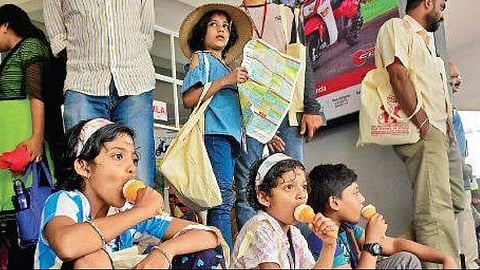

Report by Kavita Bajeli-Datt for The New Indian Express
Crimes against children in India have risen nearly tenfold since 2005, with cases reaching an all-time high of 1,77,335 in 2023, according to the latest National Crime Records Bureau (NCRB) report.
The report revealed that on average, a crime was committed against a child every three minutes last year. Compared to 2022, crimes against children recorded an increase of 9.16%.
According to the NCRB, a total of 1,77,335 cases of crimes against children were reported in 2023, marking a significant jump from the 18,700 cases documented in 2005.
The upward trend accelerated after 2012–13, dipped temporarily during the COVID-19 years (2019–20), and has since surged again, reaching its peak in 2023. Projections suggest that the figures could cross 2.5 lakh in the near future.
The analysis by CRY (Child Rights and You), an NGO working for the health, education and safety of children, showed that two out of every five crimes against children—mostly girls—were categorised as sexual offences.
As many as 70,053 cases of sexual offences involving children were recorded in 2023, up from 66,996 in 2022, indicating a 5% rise. On average, 486 crimes were committed against children every day in 2023, with around 192 cases of sexual offences reported daily.
The rate of cognisable crimes against children also increased from 36.6 in 2022 to 39.9 in 2023.
Data further revealed that the top two categories of crimes against children in 2023 were kidnapping and abduction, and sexual offences under the Protection of Children from Sexual Offences Act (POCSO), 2012.
A total of 79,884 cases were registered under kidnapping and abduction, accounting for 45.05% of all crimes against children. Meanwhile, 67,694 cases—38.17% of the total—were booked under POCSO-related offences.
Among all sub-categories of sexual offences against children, sexual harassment (under POCSO and IPC sections 354 and 509) saw the sharpest rise, climbing from 63,414 cases in 2022 to 67,694 in 2023, a 7% increase.
However, the proportion of sexual offences in overall crimes against children declined slightly, from 41% in 2022 to 40% in 2023.
In 96.6% of POCSO cases under Sections 4 and 6 (sexual assault), the offender was allegedly known to the victim. Of the total cases, 39,076 involved family members, family friends, neighbours, online acquaintances and others, while only 1,358 cases involved unknown or unidentified offenders.
Data also showed that more than 98% of victims of sexual offences against children were girls.
“This calls for building greater public awareness, creating an environment that encourages people to break the culture of silence and come forward to make it a better place for children, particularly girls,” said Puja Marwaha, CEO of CRY.
Marwaha added that while the government has taken significant steps and systemic interventions to address child safety and protection, “the current trend underscores the requirement of creating more awareness among civil society and other concerned stakeholders, apart from the government.”
She further noted that the rise in reported crimes cannot always be seen as an indication of the environment becoming more hostile for children.
“It depends on many factors, including increased community awareness leading to enhanced trust in law enforcement and more proactive reporting due to improved access to legal remedies. Hence, these figures should be viewed as indicative of both the occurrence of crime and the increasing responsiveness of communities and institutions in seeking justice for children, rather than as a simple causal measure of rising crimes,” CRY said.
